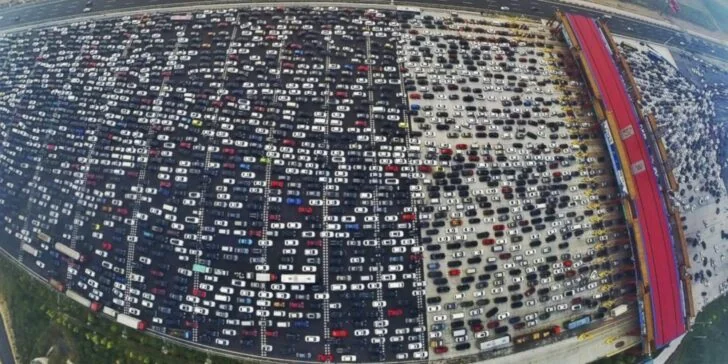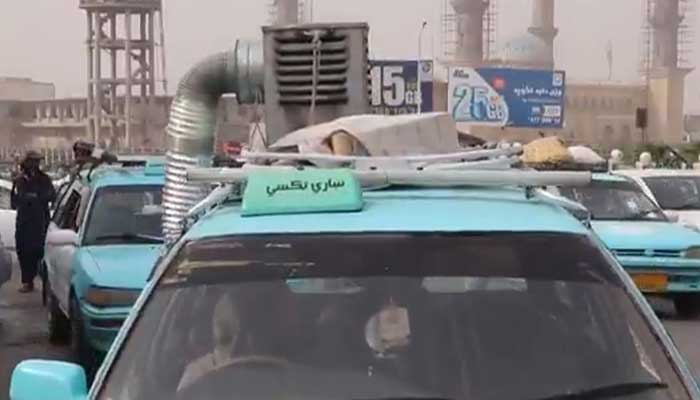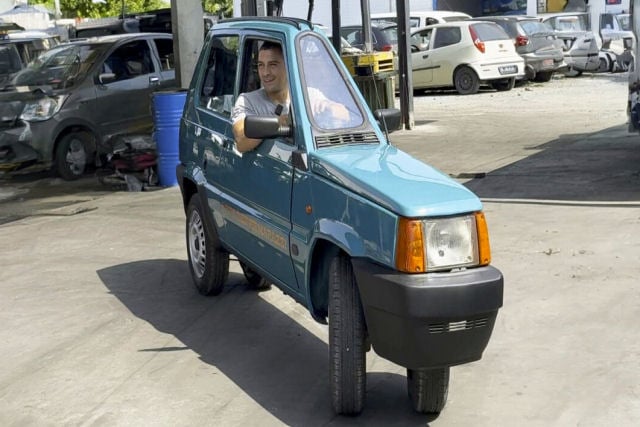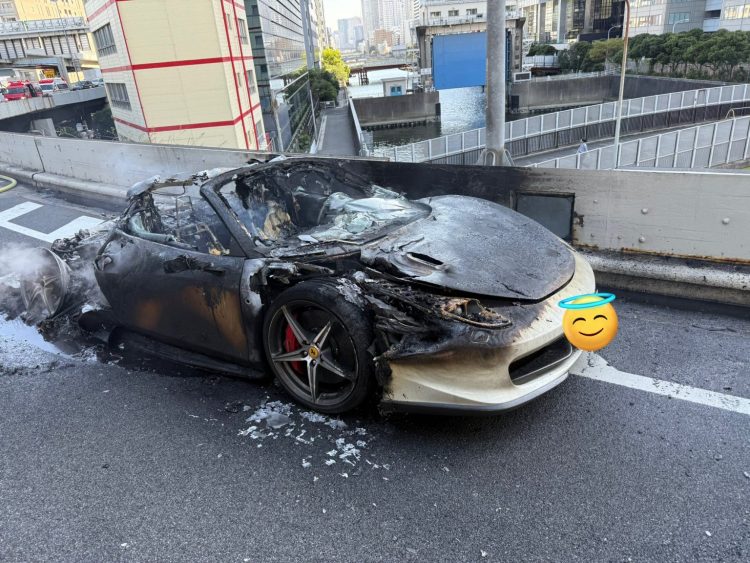In 2010, thousands of cars came to a standstill along the China National Highway 110, creating the now-famous China National Highway 110 traffic jam, which lasted 12 days and stretched over 100 kilometers.
Identifying the longest traffic jam in history is tricky because it depends on the factors considered. For example, according to Guinness World Records, the longest traffic jam ever reported occurred in 1990, on the East-West German border, and involved 18 million cars crawling to a halt. If we’re talking about distance, a traffic jam that occurred in February of this year in Uttar Pradesh could qualify as the longest ever. It reportedly stretched for 300 km across several districts of Madhya Pradesh and kept motorists crawling at a snail’s pace for about 48 hours. But, if we factor in time, there is no beating the China National Highway 110 traffic jam, which lasted for a whopping 12 days and even created a makeshift economy.

Some people can’t imagine spending more than a few hours stuck in traffic, but imagine being stranded on a motorway in the middle of nowhere for almost two weeks, with no food or water, or a way to turn your car around. This was the ordeal hundreds of thousands of motorists experienced in August of 2010, during the China National Highway 110 traffic jam.
It all started on August 14, when a combination of construction work and heavy traffic created a bottleneck the likes of which China had never experienced. Trucks carrying coal and construction materials from Inner Mongolia to Beijing clogged the motorway, which was already partially closed for repairs. Add a spike in small vehicle traffic, and you have the ingredients of a logistical disaster. Before authorities realized what had happened and closed incoming traffic from other roads, hundreds of thousands of people were already stuck over a distance of 100 kilometers (62 miles).

Traffic volume on China National Highway 110 had grown 40 percent every year in the previous several years, and at the time of the incident, traffic volume was already 60 percent over the motorway’s design capacity. The road construction reduced the road capacity by an extra 50%, and the greatly increased coal production in Inner Mongolia, coupled with a lack of railway capacity, meant that an unusually large number of trucks were also using the highway.
At first, the traffic jam was a symphony of honks, yells, and screams from angry motorists, but as time passed and cars only moved by about 1 kilometer per day, everyone got used to the new reality. They were all stuck! Locals along the motorway quickly took advantage of the situation, setting up mobile stores that sold food, water, and cigarettes at astronomical prices. For example, at the time, a bottle of water sold for 1 yuan, but at the site of the traffic jam, it cost 15 yuan.
Authorities tried to relieve the traffic by allowing more trucks into Beijing, especially at night, but it still took 12 days to dissipate the worst traffic jam in the country’s history. The China National Highway 110 traffic jam was so bad that it got its own Wikipedia page, so even though it isn’t officially recognized as the world’s longest traffic jam, most experts believe it is worthy of the title.












